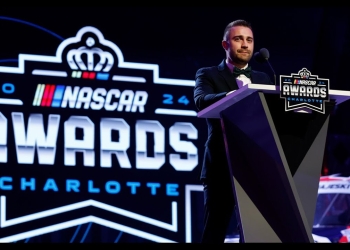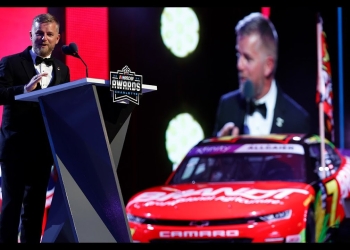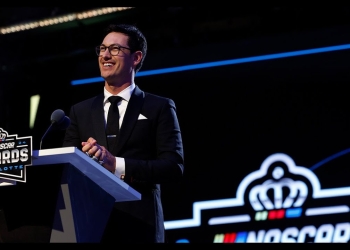Kyle Petty's Talladega Tirade: A Critical Look at NASCAR's Superspeedway Racing
NASCAR legend Kyle Petty didn't mince words when discussing the recent Talladega race. His passionate commentary shed light on the complexities and controversies surrounding one of NASCAR's most iconic tracks. Let's dive into Petty's perspective and examine the key points he raised.
The Definition of a "Great Race"
Petty challenges the notion that the Talladega race was "great." He argues:
It's not a great race when 23 cars crash and there's only seven that make it back to the line on that lap.
This statement cuts to the heart of a long-standing debate in NASCAR: Does excitement come from close racing or from avoiding massive wrecks?
Fuel Mileage Strategy at Talladega
One of Petty's major criticisms revolves around the fuel strategy employed by some teams. He points out:
- Some drivers didn't start their engines when told "Gentlemen, start your engines"
- Teams were saving fuel before the race even began
- Talladega, in Petty's view, shouldn't be a fuel mileage race
This approach to racing at Talladega raises questions about the spirit of competition and the expectations fans have for a superspeedway event.
The Blame Game: Lapped Cars vs. Lead Lap Drivers
Petty takes issue with drivers blaming lapped cars for causing wrecks. He specifically mentions:
- Todd Gilliland, a lapped car, being blamed for a major crash
- The inconsistency in praising drivers for running four-wide, but then criticizing them for not being able to pass a lapped car when running two-wide
Don't blame it on a lap car at Talladega. There's plenty of room.
This perspective challenges drivers and fans to reconsider how they assign blame after multi-car incidents.
Click here to preview your posts with PRO themes ››
Contrasting Approaches: Aggression vs. Caution
Petty highlights two different strategies employed by drivers:
-
Aggressive Racing
- Ricky Stenhouse Jr.: Ran up front from the beginning
- Brad Keselowski: Also maintained a front-running position
-
Cautious Approach
- Many drivers had "built-in excuses" for potential poor finishes
- Some seemed to expect to be caught in wrecks
The Results Speak for Themselves
Petty praises the aggressive approach, noting:
- Stenhouse finished 2nd or 3rd in the first stage
- Both Stenhouse and Keselowski took control of the race
- Stenhouse ultimately won the race
This outcome seems to validate the strategy of racing hard from the start, rather than hanging back to avoid trouble.
A Deeper Look at Driver Mentality
Petty's rant reveals a fascinating contrast in driver mindsets:
| Aggressive Mindset | Cautious Mindset |
|---|---|
| "Drop the flag, let's get it done" | "We're just victims of circumstances" |
| Take control of the race | Prepare excuses for poor finishes |
| Run up front consistently | Hang back to avoid trouble |
This table illustrates the stark difference in approaches that can determine success or failure at a track like Talladega.
The Bigger Picture
Kyle Petty's commentary raises several important questions about NASCAR racing at Talladega:
- Should fuel mileage be a factor at a superspeedway?
- How do we balance excitement with driver safety?
- Is it fair to blame lapped cars for incidents in pack racing?
- Does an aggressive strategy yield better results than a cautious one?
These questions don't have easy answers, but they're crucial for understanding the complexities of NASCAR racing at its highest level.
Conclusion
Kyle Petty's passionate rant about the Talladega race offers a unique insider's perspective on the challenges and controversies of superspeedway racing. While some may disagree with his views, his comments spark important conversations about the nature of competition, strategy, and what makes a race truly "great" in NASCAR.
Click here to preview your posts with PRO themes ››
As the sport continues to evolve, debates like these will shape its future. For now, Ricky Stenhouse Jr.'s victory stands as a testament to the effectiveness of an aggressive, front-running strategy at one of NASCAR's most unpredictable tracks.









